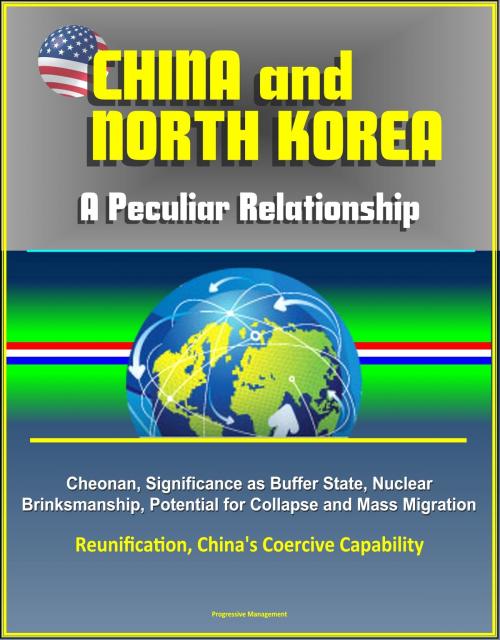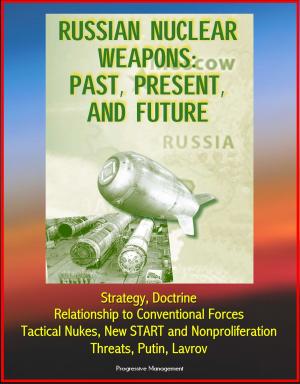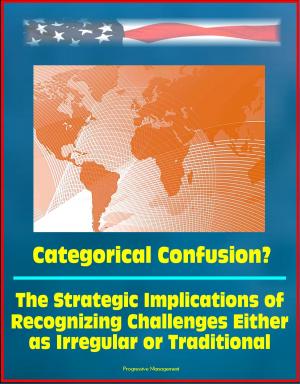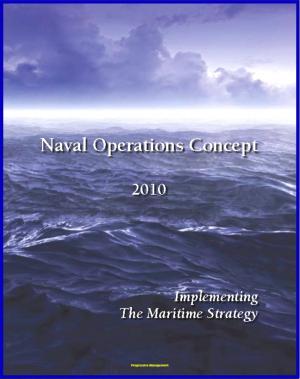China and North Korea: A Peculiar Relationship - Cheonan, Significance as Buffer State, Nuclear Brinksmanship, Potential for Collapse and Mass Migration, Reunification, China's Coercive Capability
Nonfiction, History, Military, Nuclear Warfare, Asian, China| Author: | Progressive Management | ISBN: | 9781370479863 |
| Publisher: | Progressive Management | Publication: | March 29, 2017 |
| Imprint: | Smashwords Edition | Language: | English |
| Author: | Progressive Management |
| ISBN: | 9781370479863 |
| Publisher: | Progressive Management |
| Publication: | March 29, 2017 |
| Imprint: | Smashwords Edition |
| Language: | English |
This excellent report has been professionally converted for accurate flowing-text e-book format reproduction. Since Beijing organized the six-party talks in 2003 and persuaded North Korea to participate, much of the international community has applauded China's leadership in attempting to stabilize the region. However, some U.S. policymakers and regional experts have mistaken China's preference for a non-nuclear Korea as indication that Beijing's policy goals are more similar to U.S. policy goals than is accurate. Some mistake China's policy priorities in the region and, therefore, do not understand why Beijing does not take a more hard-line stance against North Korea. Others overestimate China's ability to influence North Korea. The purpose of this thesis is to provide a clearer understanding of Beijing's short-term and long-term policies toward North Korea and the limits of Beijing's ability to influence Pyongyang's behavior, in order to assist U.S. policymakers in formulating realistic strategies toward interaction with China on Korean peninsula issues.
I. INTRODUCTION * A. THE CHEONAN * B. IMPORTANCE * C. HYPOTHESES * D. TOPICS AND SCOPE BY CHAPTER * II. BIG BROTHER-LITTLE BROTHER * A. EVOLUTION OF SINO-NORTH KOREAN RELATIONS * 1. New Bonds Formed in the Fire of Revolution and War * B. A DIVERGENCE IN PATHS * 1. North Korea * 2. China * C. CONCLUSION * III. CHINA'S POLICY ON NORTH KOREA * A. INTRODUCTION * B. THE OFFICIAL POLICY * C. NORTH KOREA'S SIGNIFICANCE * 1. Communist Ideology * 2. Buffer State * 3. Leverage in Taiwan Issue * 4. Summary * D. CHINA'S BEHAVIOR DURING NORTH KOREAN CRISES * 1. North Korea Nuclear Brinkmanship * 2. North Korean Conventional Provocations * E. COLLAPSE AND MASS MIGRATION * IV. CHINA'S SHORT-TERM AND LONG-TERM STRATEGIES * A. INTRODUCTION * B. CHINA'S SHORT-TERM PREFERENCE FOR THE STATUS QUO * C. CHINA'S LONG-TERM PREFERENCES * 1. To Reunify or To Not Reunify * 2. Socialism, Capitalism, or Neutrality? * D. CONCLUSION * V. CHINA AND NORTH KOREA'S PECULIAR INTERDEPENDENCE * A. MISPERCEPTIONS OF CHINA'S COERCIVE CAPABILITIES * B. CHINA AND NORTH KOREA'S ECONOMIC RELATIONSHIP IN PERSPECTIVE * 1. Trade and Investment * 2. Foreign Assistance * C. NORTH KOREA'S DEFIANCE OF CHINA * 1. You Only Have Leverage, If You Know You Have Leverage * 2. The Collapse Card * 3. The Taiwan Card * D. CONCLUSION * VI. CONCLUSION * A. SUMMARY FINDINGS * B. AREAS FOR ADDITIONAL RESEARCH * C. POLICY RECOMMENDATIONS
This excellent report has been professionally converted for accurate flowing-text e-book format reproduction. Since Beijing organized the six-party talks in 2003 and persuaded North Korea to participate, much of the international community has applauded China's leadership in attempting to stabilize the region. However, some U.S. policymakers and regional experts have mistaken China's preference for a non-nuclear Korea as indication that Beijing's policy goals are more similar to U.S. policy goals than is accurate. Some mistake China's policy priorities in the region and, therefore, do not understand why Beijing does not take a more hard-line stance against North Korea. Others overestimate China's ability to influence North Korea. The purpose of this thesis is to provide a clearer understanding of Beijing's short-term and long-term policies toward North Korea and the limits of Beijing's ability to influence Pyongyang's behavior, in order to assist U.S. policymakers in formulating realistic strategies toward interaction with China on Korean peninsula issues.
I. INTRODUCTION * A. THE CHEONAN * B. IMPORTANCE * C. HYPOTHESES * D. TOPICS AND SCOPE BY CHAPTER * II. BIG BROTHER-LITTLE BROTHER * A. EVOLUTION OF SINO-NORTH KOREAN RELATIONS * 1. New Bonds Formed in the Fire of Revolution and War * B. A DIVERGENCE IN PATHS * 1. North Korea * 2. China * C. CONCLUSION * III. CHINA'S POLICY ON NORTH KOREA * A. INTRODUCTION * B. THE OFFICIAL POLICY * C. NORTH KOREA'S SIGNIFICANCE * 1. Communist Ideology * 2. Buffer State * 3. Leverage in Taiwan Issue * 4. Summary * D. CHINA'S BEHAVIOR DURING NORTH KOREAN CRISES * 1. North Korea Nuclear Brinkmanship * 2. North Korean Conventional Provocations * E. COLLAPSE AND MASS MIGRATION * IV. CHINA'S SHORT-TERM AND LONG-TERM STRATEGIES * A. INTRODUCTION * B. CHINA'S SHORT-TERM PREFERENCE FOR THE STATUS QUO * C. CHINA'S LONG-TERM PREFERENCES * 1. To Reunify or To Not Reunify * 2. Socialism, Capitalism, or Neutrality? * D. CONCLUSION * V. CHINA AND NORTH KOREA'S PECULIAR INTERDEPENDENCE * A. MISPERCEPTIONS OF CHINA'S COERCIVE CAPABILITIES * B. CHINA AND NORTH KOREA'S ECONOMIC RELATIONSHIP IN PERSPECTIVE * 1. Trade and Investment * 2. Foreign Assistance * C. NORTH KOREA'S DEFIANCE OF CHINA * 1. You Only Have Leverage, If You Know You Have Leverage * 2. The Collapse Card * 3. The Taiwan Card * D. CONCLUSION * VI. CONCLUSION * A. SUMMARY FINDINGS * B. AREAS FOR ADDITIONAL RESEARCH * C. POLICY RECOMMENDATIONS















